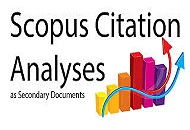Development of Practical Guidelines for Waste Processing Based on Liquid Organic Fertilizer Formulation Research for High School Biology Learning
DOI:
https://doi.org/10.33394/jp.v12i4.15825Keywords:
Biology practicum, Liquid organic fertilizer, Moringa leaves, Organic waste, Pineapple peel., practical guideAbstract
Abstract: This research aims to formulate a liquid organic fertilizer (LOF) based on banana corm, moringa leaves, and pineapple peel, providing a practical guide for organic waste processing in high school biology learning. The study used samples of organic waste (banana corm, moringa leaves, and pineapple peel) collected from Suci Village, Panti District, Jember Regency, which were then formulated into liquid fertilizer through a fermentation process lasting 14 days with the addition of bioactivators and other supporting materials. Data collection was conducted by observing the nutrient content of the LOF analyzed in the laboratory of Jember State University and validating the practical guide using validation sheets by three experts who assessed material, media, and language aspects on a Likert scale of 1–5. The validation data were analyzed descriptively and quantitatively by calculating the average percentage score to determine the product's validity level. Laboratory analysis showed that the resulting LOF contained Nitrogen (N) at 0.05%, Phosphorus (P) at 0.0032%, Potassium (K) at 0.005%, organic carbon at 0.62%, iron (Fe) at 0.00053%, and a pH of 3.4. The macro- and micronutrient content in this LOF is still below the minimum standards set by the Ministry of Agriculture; however, this formulation still provides an alternative for the value-added utilization of agricultural organic waste. The practical guide developed in this research has been validated by three expert validators with an average assessment percentage of 79.90%, indicating that this guide is valid for use in grade 10 high school biology learning on the topics of environmental change, waste, and recycling. The results show that this practical guide for making LOF is feasible to implement, contributing to organic waste management and contextual learning media that supports project-based environmental education. This study's outcomes have implications for developing innovative learning materials and promoting sustainable waste management practices in educational settings, ultimately enhancing environmental awareness and literacy among high school students.
References
Aditya, C., Qoidani, A. P., & Soeprijanto. (2018). Pembuatan Pupuk Organik Cair (POC) dari Bonggol Pisang melalui Proses Fermentasi. Fakultas Vokasi Institut Teknologi Sepuluh Nopember, 49–102. http://repository.its.ac.id/47744/
Andriani, V., & Habibah, R. N. (2019). Penambahan Konsentrasi Fe EDTA pada Nutrisi AB Mix Terhadap Pertumbuhan dan Produksi Tanaman Pakchoy (Brassica rapa l.) Sistem Hidroponik Nutrien Film Technique (NFT). Prosiding Seminar Nasional Hayati, 7(September), 159–163–159–163. https://proceeding.unpkediri.ac.id/index.php/hayati/article/view/585
Anzila, S. M., & Asngad, A. (2022). Efektivitas Kombinasi POC Bonggol Pisang dan Daun Kelor terhadap Pertumbuhan dan Produktivitas Tanaman Sawi Pakcoy (Brassica rapa L.) dengan Metode Hidroponik. Bio-Lectura : Jurnal Pendidikan Biologi, 9(2), 168–178. https://doi.org/10.31849/bl.v9i2.10754
Budiarti, W., & Oka, A. A. (2017). Pengembangan Petunjuk Praktikum Biologi Berbasis Pendekatan Ilmiah (Scientific Approach) Untuk Siswa Sma Kelas Xi Semester Genap Tahun Pelajaran 2013/2014. BIOEDUKASI (Jurnal Pendidikan Biologi), 5(2), 123–130. https://doi.org/10.24127/bioedukasi.v5i2.791
Ersadi, M., Maharani, L., & Hasanah, H. U. (2023). Pengaruh Kombinasi Pupuk Organik Dari Kotoran Sapidan Pupuk Organik Cair Dari Batang Pisang Terhadap Pertumbuhan Pakcoy (Brassica rapa). BIO-CONS: Jurnal Biologi Dan Konservasi, 5(1), 96–109. https://doi.org/: https://doi.org/10.31537/biocons.v5i1.1182
Hartatik, W., Husnain, & Widowati, L. R. (2015). Peranan pupuk organik dalam peningkatan produktivitas tanah dan tanaman. Jurnal Sumberdaya Lahan, 107–120.
Herlinawati, Dharmawibawa, I. D., & Armiani, S. (2019). Uji Efektivitas Pupuk Organik Cair dari Urin Ternak Sapi dan Kuda Terhadap Pertumbuhan Vegetatif Tanaman Sawi (Brassica juncea L.). Bioscientist : Jurnal Ilmiah Biologi, 7(2), 159. https://doi.org/10.33394/bjib.v7i2.2375
Infarm. (2024). Pentingnya Unsur Hara Bagi Tanaman. Infarm. https://www.infarm.co.id/detail-artikel/pentingnya-unsur-hara-bagi-tanaman
Kementerian Pertanian No. 261/ KPTS/ SR. 310//M/4/2019. (2019). Persyaratan teknis minimal pupuk organik, pupuk hayati, dan pembenah tanah. In Pub. L. No. 261/ KPTS/ SR. 310//M/4/2019 (2019). (pp. 1–18). http://psp.pertanian.go.id/index.php/page/publikasi/418
Khotimah, K., Dahlianah, I., & Novianti, D. (2020). Respons Pertumbuhan Tanaman Sawi Caisim (Brassica juncea L.) terhadap Pupuk Organik Cair Buah Pepaya (Carica papaya L.). Indobiosains, 2(2), 64. https://doi.org/10.31851/indobiosains.v2i4.4492
Marasabessy, D. A., & Tanasale, V. L. (2020). Potensi Pemanfaatan Limbah Pertanian Lokal Sebagai Pupuk Organik Cair terhadap Pertumbuhan dan Produksi Petsai (Brassica pekinensis). Jurnal Agroekoteknologi Dan Agribisnis, 4(2), 9–19.
Putri, D. E. (2020). Pengaruh Penggunaan Media Pembelajaran Visual Terhadap Hasil Belajar Matematika Siswa Kelas Vi Mis Al-Kautsar Kecamatan Medan Johor. Doctoral Dissertation, Universitas Islam Negeri Sumatera Utara, 1–23.
Reyni, I. M., & Binawati, D. K. (2023). Respon Pemberian Pupuk Organik Cair Kombinasi Bonggol Pisang dan Daun Kelor terhadap Pertumbuhan Tanaman Sawi Hijau ( Brassica juncea L .). Snhrp-5, 6, 2963–2970.
Rosawanti, P. (2019). Kandungan Unsur Hara pada Pupuk Organik Tumbuhan Air Lokal. Daun: Jurnal Ilmiah Pertanian Dan Kehutanan, 6(2), 140–148. http://scioteca.caf.com/bitstream/handle/123456789/1091/RED2017-Eng-8ene.pdf?sequence=12&isAllowed=y%0Ahttp://dx.doi.org/10.1016/j.regsciurbeco.2008.06.005%0Ahttps://www.researchgate.net/publication/305320484_SISTEM_PEMBETUNGAN_TERPUSAT_STRATEGI_MELESTARI
Salmiati, A. (2023). Pengembangan Penuntun Praktikum Pembuatan Pupuk Organik Cair pada Materi Kimia Unsur Di SMA Negeri 1 Beutong. Skripsi UIN Ar-Raniry Darussalam Aceh. https://repository.ar-raniry.ac.id/id/eprint/34169/%0Ahttps://repository.ar-raniry.ac.id/id/eprint/34169/1/Aja Salmiati%2C 180208027%2C FTK%2C PKM.pdf
Saparuddin, Kurnia, N., & Thung, C. N. Y. (2022). Pengembangan Panduan Project Based Learning (PjBL) Berbasis Riset Pengolahan Limbah Organik Menggunakan Hermetia illucens. Binomial, 5(2), 147–160. https://doi.org/10.46918/bn.v5i2.1536
Sifaunajah, A., Munawarah, Azizah, C., Amelia, N. F., & Sholehah, N. A. (2022). Pemanfaatan Limbah Air Cucian Beras Sebagai Pupuk Organik Cair. VIVABIO: Jurnal Pengabdian Multidisiplin, 4(1), 33. https://doi.org/10.35799/vivabio.v4i1.39556
Susi, N., Surtinah, & Rizal, M. (2018). Pengujian Kandungan Unsur Hara Pupuk Organik Cair (POC) Limbah Kulit Nenas. Jurnal Ilmiah Pertanian, 14(2), 46–51. https://doi.org/10.31849/jip.v14i2.261
Triadiawarman, D., Aryanto, D., & Krisbiyantoro, J. (2022). Peran Unsur Hara Makro Terhadap Pertumbuhan dan Hasil Bawang Merah (Allium cepa L.). Agrifor, 21(1), 27. https://doi.org/10.31293/agrifor.v21i1.5795
Waris, W., Prasetyo, G. D., & Putri, H. R. (2023). Pengaruh Pupuk Organik Cair (POC) Lidah Buaya (Aloe vera) Terhadap Pertumbuhan Selada Keriting Hijau (Lactuca sativa L.). BIO-CONS: Jurnal Biologi Dan Konservasi, 5(2), 182–192. https://doi.org/https://doi.org/10.31537/biocons.v5i2.1492
Yanti, S., Ibrahim, I., Masrullita, Kurniawan, E., & Muhammad. (2022). Pembuatan Pupuk Organik Cair dari Limbah Sayuran dengan Menggunakan Bioaktivator EM4. Jurnal Teknologi Kimia Unimal, 11(2), 267. https://doi.org/10.29103/jtku.v11i2.9466
Published
How to Cite
Issue
Section
Citation Check
License
Copyright (c) 2025 The Author(s)

This work is licensed under a Creative Commons Attribution-ShareAlike 4.0 International License.
License and Publishing Agreement
In submitting the manuscript to the journal, the authors certify that:
- They are authorized by their co-authors to enter into these arrangements.
- The work described has not been formally published before, except in the form of an abstract or as part of a published lecture, review, thesis, or overlay journal.
- That it is not under consideration for publication elsewhere,
- That its publication has been approved by all the author(s) and by the responsible authorities tacitly or explicitly of the institutes where the work has been carried out.
- They secure the right to reproduce any material that has already been published or copyrighted elsewhere.
- They agree to the following license and publishing agreement.
Copyright
Authors who publish with Jurnal Paedagogy agree to the following terms:
- Authors retain copyright and grant the journal right of first publication with the work simultaneously licensed under a Creative Commons Attribution License (CC BY-SA 4.0) that allows others to share the work with an acknowledgment of the work's authorship and initial publication in this journal.
- Authors are able to enter into separate, additional contractual arrangements for the non-exclusive distribution of the journal's published version of the work (e.g., post it to an institutional repository or publish it in a book), with an acknowledgment of its initial publication in this journal.
- Authors are permitted and encouraged to post their work online (e.g., in institutional repositories or on their website) prior to and during the submission process, as it can lead to productive exchanges, as well as earlier and greater citation of published work.
Licensing for Data Publication
-
Open Data Commons Attribution License, http://www.opendatacommons.org/licenses/by/1.0/ (default)






